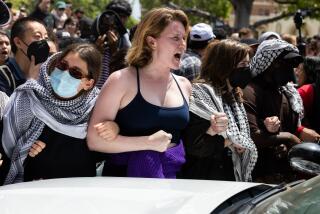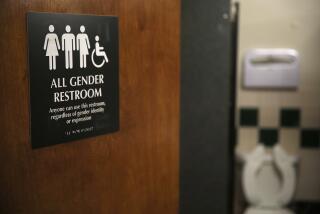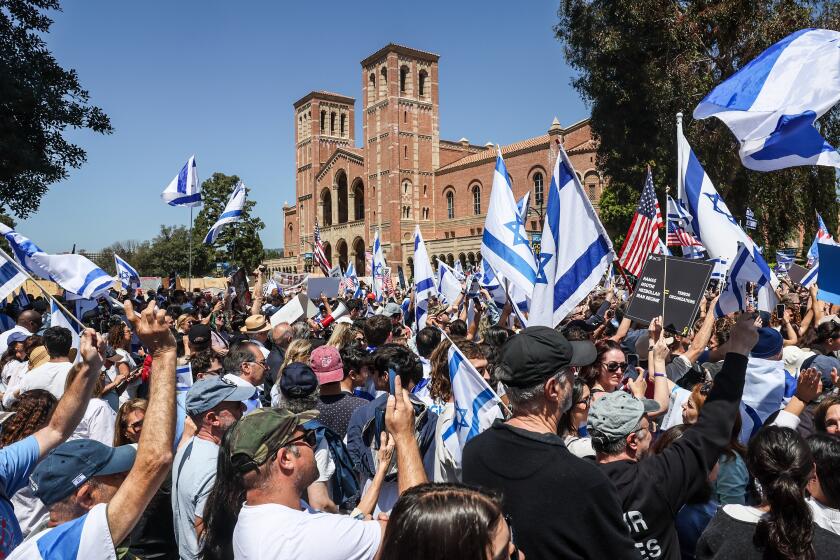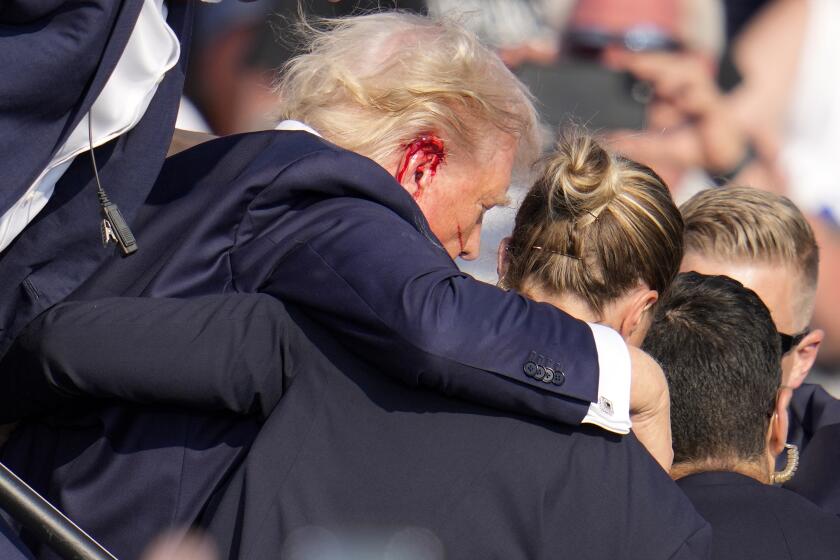Op-Ed: How close is #MeToo to full riot mode?
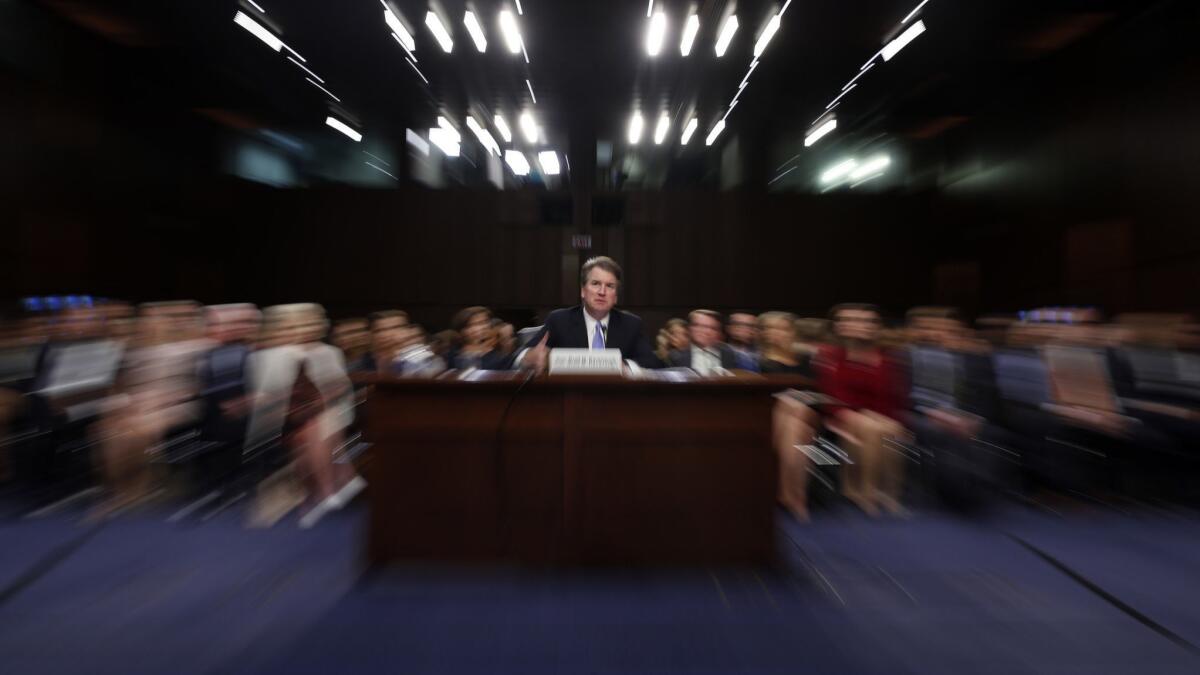
“The Godfather” ends with a famous scene in which each of the heads of the five most powerful New York mafia families is assassinated. One is exiting a gilded elevator. One is in a white tuxedo. One is on the steps of the Foley Square courthouse. One is on a massage table. One is in bed with a prostitute.
They’re relishing their privileges, in other words. And suddenly they’re gone.
For the record:
9:50 a.m. Sept. 25, 2018This op-ed mischaracterizes the final scene of “The Godfather.” Four New York Mafia dons are assassinated, not five. Moe Greene, a lieutenant of mobster Hyman Roth, was the fifth man assassinated.
So far, despite the feminist anger that now burns brightly from sea to shining sea, no one has been shot point-blank in the eye at the behest of #MeToo. And though hundreds of men by my estimate — Vox had it at 219 in May — have been questioned or sidelined following credible reports of sexual harassment and abuse, violence is unlikely, right? Among feminists, assassins are few. Female activists don’t tend to riot, either.
It’s staggering: #MeToo, in its early days, is already one of the most effective social-justice movements in American history.
Instead, this week, protesters thronged the lobby of the Hart Senate Office Building on Capitol Hill for #CancelKavanaugh, a demonstration to show support for psychology professor Christine Blasey Ford, who accuses Supreme Court nominee Brett Kavanaugh of sexually assaulting her in 1982.
“We believe Christine Ford! We believe Anita Hill!” they chanted, connecting Ford and Hill, the lawyer and academic who, famously, was called into the Senate 27 years ago to testify about allegations of sexual harassment by another Supreme Court nominee, Clarence Thomas. Thomas was confirmed anyway. That grave miscarriage of justice from 1991 still rankles. Dozens of women were arrested at the #CancelKavanaugh protest.
For the last two years, feminists, their numbers swelling, have stuck to the letter of nonviolence doctrine, inherited from the civil rights movement. The Women’s March on Washington on Jan. 21, 2017, which kicked off a new highly organized and seemingly dauntless phase of feminist activism, was organized in part at the Gathering for Justice, a nonprofit headquartered in New York and founded by civil rights agitator (and actor and singer) Harry Belafonte. The call for the January march, timed to coincide with President Trump’s inauguration, sparked a record-breaking single-day protest, the largest in American history. For a global protest of that size to be thoroughly peaceful, as the Women’s March was, is almost unheard of.
And without striking physical blows, #MeToo and the latest wave of feminist activism has been almost terrifyingly effective. Feminism now pervades liberalism, and it has become its leading edge, deftly sidestepping the defeatism that nips at the edges of other liberal causes in the Trump era, notably climate activism. Since the 2016 election, feminism has grown much, much faster, bigger and louder than Trumpism.
Armed anarchists at the turn of the century, literally gunning for the elites, didn’t manage to strip even one robber baron of his privileges. By contrast, the whistleblowers of #MeToo have gotten men fired, shamed, investigated and in a few cases charged. It’s staggering: #MeToo, in its early days, is already one of the most effective social-justice movements in American history.
One thing that’s making contemporary modern feminism so effective is that it’s become common sense, part of the air we breathe. The radical outliers now seem to be the strange affronted creatures who bristle and snap when accused of harassment or abuse, producing weird phonemes about how misunderstood they are. (Bad-faith Exhibits A and B: The essays by alleged abusers and former radio personalities Jian Ghomeshi and John Hockenberry, in which both men, aiming to extenuate their treatment of women, come across as worryingly unwell.)
As #MeToo continues to serve its purpose, innumerable people — of all genders — have added their voices to the chorus of those who have endured and witnessed sexual harassment, assault, rape, abuse, and coerced silence and complicity. Whistleblowers such as Hill and Ford no longer face stone cold disbelief as everyone from centrists to celebrities to churches declares their trust in them. Those whose spidey sense told them for years that something was wrong with some men they encountered — in the workplace, in the locker room, at the frat party — are now getting the details.
Enter the Fray: First takes on the news of the minute from L.A. Times Opinion »
And justice is being served in a way we cannot fail to appreciate. Stripping male harassers and abusers of their power, their microphones, their hedge fund portfolios — as well as their reputations — seems not so much cruel or unusual but fair and square. Losing your job in broadcast or banking, in fact, seems a mild social sentence for people who have, at the least, created a hostile work environment and, at most, committed violent felonies.
And the work of #MeToo is not letting up. It’s hard to see any outcome of the Ford story except this: If alleged sexual assailant Brett Kavanaugh is confirmed it will serve as a catchy recruitment video for a still-more-activated feminist base.
The powers that be can be happy that women don’t riot. Or, not usually. Sure, there have been a few feminist incidents: The revolutionary women in Paris in 1789. British suffragists rose up violently in 1910. Oh, and there were the Aba Women’s Riots in Nigeria in 1929. All bloody affairs, but come on, American women would have to be furious to exchange pussy hats and protest signs for helmets and tactical vests.
Oh, wait.
Twitter: @page88
Follow the Opinion section on Twitter @latimesopinionand Facebook
More to Read
A cure for the common opinion
Get thought-provoking perspectives with our weekly newsletter.
You may occasionally receive promotional content from the Los Angeles Times.
